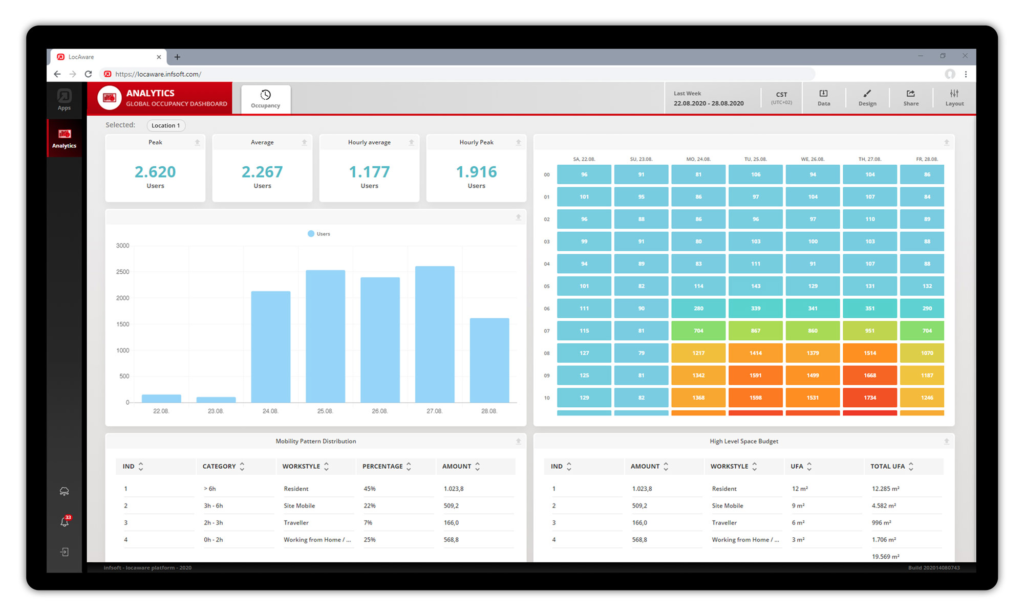
What is Space Management and Why Does It Matter?
In today’s flexible work world, your “office” could be a beachfront café one day and a high-rise coworking hub the next. Space management is the art (and science) of making every square metre work harder for you — turning real estate into a strategic advantage.
In this story
With hybrid work now the norm, traditional facilities planning no longer fits. Office attendance is unpredictable — average utilization rates have dropped from 70% in 2019 to under 40% in many markets (CBRE, 2023) — yet demand for hot desks, meeting rooms, and collaboration zones has surged. Without a smart, data-driven approach, companies risk paying for empty chairs while people compete for key spaces.
For coworking members, great space management means you can count on a desk when you need it, find ergonomic setups that support long hours, and enjoy a workspace that flexes with your schedule.
The Rise of Flexible Work
Since the pandemic, more than 70% of global knowledge workers now work in hybrid or fully remote arrangements (JLL, 2023). Client calls happen online as easily as in person, and project teams often span multiple time zones. This new freedom brings choice — but also challenges for workspace planning.
Why Efficient Space Matters
Every empty seat is wasted potential. For companies, that means higher costs and underused assets. For coworking operators, it means balancing capacity so peak days run smoothly without overspending on space during quiet periods. Smart space management turns occupancy data into action — so you can adjust layouts, launch hot-desking, or reconfigure rooms without sacrificing user experience.
What Space Management Involves
1. Smart Allocation
Assign every area to a clear purpose — whether that’s focused work, collaboration, or relaxation. In coworking spaces, this mix changes constantly to match member demand.
2. Utilization & Density Tracking
Measure how often desks, rooms, and zones are used — and how many people share each area. Use these insights to optimize layouts and keep spaces busy but comfortable.
3. Occupancy Analytics
Blend sensor data, Wi-Fi usage, and booking systems to see patterns — which days are busiest, which areas sit empty, and where demand spikes. This lets you predict needs and adapt in real time.
4. Move Management
When teams grow, projects end, or priorities shift, reconfiguring space quickly is vital. From relocating furniture to converting underused rooms, smooth transitions keep your space relevant and appealing.
Core Tools and Practices

- Data Collection & Audits — Know exactly how your space is used, not just how you think it is.
- Planning & Forecasting — Match supply to demand, from daily seat bookings to long-term growth.
- Technology — CAFM/IWMS platforms and IoT sensors provide real-time data for better decisions.
- Policy Alignment — Link space decisions to your goals — cost savings, sustainability, wellness, or brand positioning.
Key Benefits
- Cost Savings — Reduce unused space and cut operating costs by up to 30%.
- Wellness — Improve air quality, ergonomics, and zoning to support health and productivity.
- Sustainability — Lower energy use and carbon footprint with smart layouts and responsive systems.
- Productivity — Eliminate the time wasted hunting for rooms or desks.
- Flexibility — Adapt quickly to changing team sizes and work patterns.
- Brand Image — Show members, clients, and prospects you value efficiency, comfort, and innovation.
Real-World Wins
Corporate HQ — A Fortune 500 company cut €11 million in annual costs and boosted satisfaction by rethinking its seating ratios and repurposing underused floors.
Monteco Coworking, Budva — By adding smart booking tools, occupancy sensors, and climate control, Monteco increased revenue by 22%, cut energy use by 30%, and kept desk demand high year-round.
Best Practices for Coworking Operators

- Start with Accurate Data — Audit space use before making changes.
- Adopt Flexible Seating — Match desk availability to work styles.
- Use Real-Time Tools — Adjust availability instantly based on live occupancy.
- Prioritize Wellness — Design for comfort, light, and air quality.
- Tie Metrics to KPIs — Show how space impacts revenue, retention, and sustainability.
- Test Before Scaling — Pilot changes and refine before rolling out site-wide.
Conclusion
Space management isn’t just about floor plans — it’s about creating a workplace that works for everyone, every day. In a coworking setting, it’s the difference between members staying for a day and members staying for years.




Leave a Reply